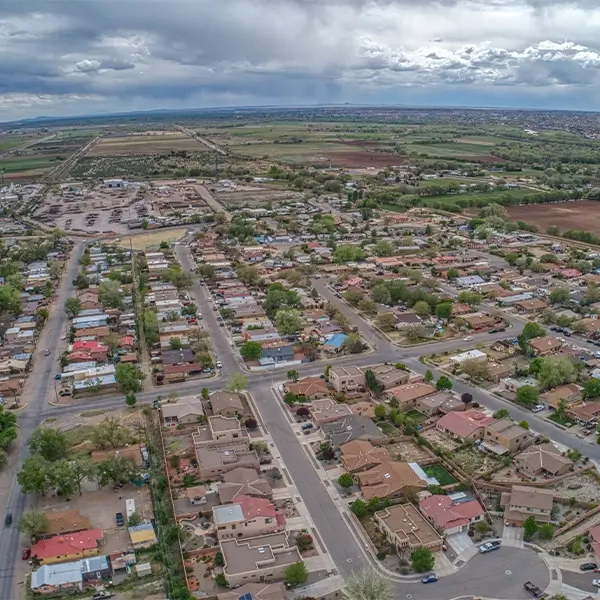With 28% of statewide pre-mitigation radon tests showing levels above the EPA action threshold, radon remains a critical health concern across New Mexico. Given the state’s diverse geology, from mountainous regions around Santa Fe to river valleys near Albuquerque, radon concentrations vary dramatically, highlighting the necessity of localized testing. Recent CDC data indicates Bernalillo County recorded radon levels as high as 57.4 pCi/L, exceeding the EPA’s recommended action threshold of 4 pCi/L. Chaves County also reported elevated levels, reaching up to 13.5 pCi/L.
Radon Risks in New Mexico
New Mexico’s varied geology contributes to diverse radon levels across the state, with counties such as Santa Fe, Bernalillo, and Rio Arriba often recording elevated radon concentrations. According to the Indoor Environments Association (IEA), New Mexico experiences approximately 116 radon-induced lung cancer cases each year.
These cases significantly impact both medical and economic aspects, totaling roughly $23 million in healthcare expenses and an additional $24 million in lost productivity annually. Despite these risks, the state lacks formal radon safety regulations, placing the responsibility of radon management squarely on homeowners and property managers.
Why Radon Testing Matters
Testing your home or building for radon is essential to protect occupants from potential health risks. According to the IEA, approximately 42% of pre-mitigation radon tests in New Mexico reveal levels below 2 pCi/L, suggesting that many properties maintain safe air quality conditions. Regular testing helps homeowners stay informed about their radon levels and respond appropriately to any changes.
However, around 30% of properties in the state register moderate radon levels between 2 and 4 pCi/L, levels that still pose a potential long-term health risk. In these situations, routine monitoring becomes crucial, and proactive mitigation efforts can significantly reduce the risk of harmful exposure, ensuring that indoor environments remain safe and healthy over the years.
Mitigating Radon in New Mexico Homes and Businesses
Prompt radon mitigation in New Mexico requires strategies tailored to the state’s unique geology and home construction styles. Standard foundations typically benefit from sub-slab depressurization, a proven method that safely redirects radon gas outdoors through pipes installed beneath the building.
For homes characteristic of New Mexico, such as traditional adobe structures or properties with crawl spaces, alternative methods like sub-membrane depressurization may be necessary. These techniques account for local building materials and foundation types, effectively managing radon infiltration and ensuring healthier indoor air.
Professional Radon Services in New Mexico
Without state-required radon regulations in New Mexico, home and business owners need to take active steps to protect their properties. Hiring experienced professionals familiar with New Mexico’s varied housing types and unique environmental conditions ensures accurate testing and appropriate mitigation.
Southwest Radon Eliminators has a team of NRPP-certified specialists equipped to handle these local challenges. With extensive experience working on the many unique homes and businesses across New Mexico’s, we provide comprehensive radon testing, effective mitigation, and continuous radon monitoring services, ensuring your air quality remains safe at all times.
